Complete Solutions to Advance McQ of chapter LINEAR MOMENTUM & ITS CONSERVATION of Class 11 book with complete answers and questions
| Class 11 | PHYSICS |
| Chapter | LINEAR MOMENTUM & ITS CONSERVATION |
| PHYSICS GALAXY | Advance McQ |
| Number Of Questions | 20 |
| Academic Year | 2023-24 |
In which o the following cases the centre of mass of a rod is certainly not at its centre?
View SolutionWhen two blocks connected by a spring move towards each other under mutual interaction
View SolutionA body has its centre of maas at the origin. The x-coordinates of the particles
View SolutionA body moving towards a finite body at rest collides with it. It is possible that
View SolutionIn an elastic collision between smooth balls :
View SolutionA system of particles is acted upon by a constant nonzero external force. If `v` and `a` are instantaneous velocity and acceleration of the centre of mass, then it is possible that at a given instant
View SolutionIn an elastic collision between spheres A and B of equal mass but unequal radii, A moves along the x-axis and B is stationary before impact. Which of the following is possible after impact ?
View SolutionA particle moving with kinetic energy=3 J makes an elastic head-on collision with a stationary particle which has twice its mass. During the impact:
View SolutionA long block A is at rest on a smooth horizontal surface. A small block B, whose mass is half of A, is placed on A at one end and projected along A with some velocity u. The coefficient of friction between the blocks is `mu`:
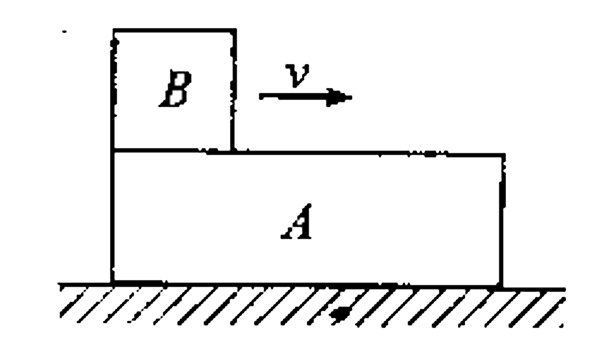
View SolutionA strip of wood of mass M and length l is placed on a smooth" horizontal surface. An insect of mass m starts at one end of the strip and walks to the other end in time t,moving with a constant speed :
View SolutionIn one-dimensional collision between two identical particles A and B,B is stationary and A has momentum p before and after the impact, and(P-J) during the impact:
View SolutionTwo blocks `A` and `H`. each of mass `m`, are connected by a massless spring of natural length `I`. and spring constant `K`. The blocks are initially resting in a smooth horizontal floor with the spring at its natural length, as shown in Fig. A third identical block `C`, also of mass `m`, moves on the floor with a speed `v` along the line joining `A` and `B`. and collides elastically with `A`. Then

View SolutionThe elastic collision between two bodies, A and B can be considered using the following model. A and B are free to move along a common line with out friction. When separation between the surfaces is greater then d= 1m,the interacting force is zero, when their distance less than d, a constant repulsive force F= 6N is present. The mass of body A ism_(A) = 1kg and it is initially at rest. The mass of body B is`m_(B)` = 3kg and it is approaching towards A with a speed`v_(0) = 2 m//s.` Then choose the correct option(s).
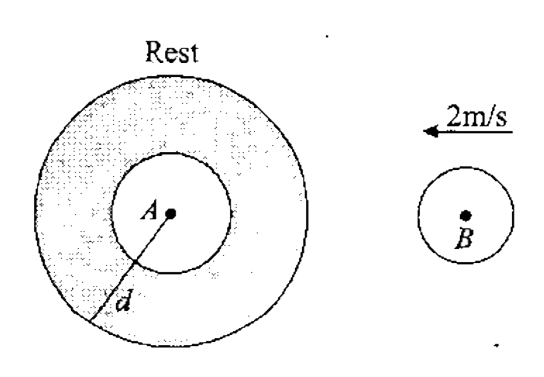
View SolutionThe sum of all the external forces on a system of particles is zero. Which of the following must be true for the system of particles ?
View SolutionConsider a particle at rest which may decay into two (daughter) particles or into three (daughter) particles. Which of the following is`//`are true? (There are no external forces):
View Solutionthee identical cylinders each of mass M and radius R are in contact and kept on a rough horizontal surface coefficient of friction between any cylinder and surface is `mu : A "force" F= mu M"gt"` act on the first cylinder mark the correct statement .
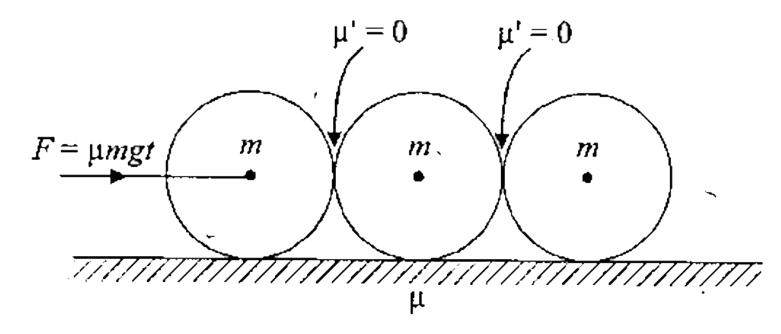
View SolutionA wooden block (mass M) is hung from a peg by a massless string .A speeding bullet (with mass m and initial speed`v_(0)`) collides with block at time t=0 and embeds in it. Let S be the system consisting of the block and bullet. Which quantities are NOT conserved between t=-10 sec t=+10 sec?
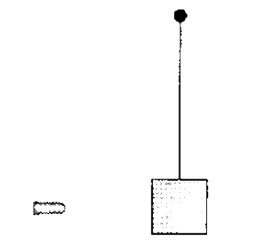
View SolutionVelocity of a particle of mass `2 kg` change from `vecv_(1) =-2hati-2hatjm/s` to `vecv_(2)=(hati-hatj)m//s` after colliding with as plane surface.
View SolutionTwo identical particles A and B of mass m each are connected together by a light and inextensible string of length l. The particle are held at rest in air in same horizontal level at a separation I. Both particles are released simultaneously and one of them (say A) is given speed `V_(0)` vertically upward. Choose the correct options (s). Ignore air resistance.
View SolutionA disk moving on a frictionless horizontal table collides elastically y with another identical disk as shown. The directions of motion of the two disks make angles 0 and `phi` with the initial line of motion as shown. Then
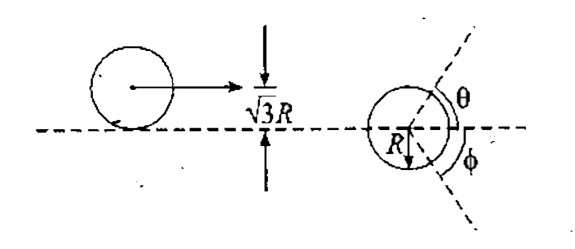
View Solution
Advance McQ questions and complete solutions for chapter LINEAR MOMENTUM & ITS CONSERVATION of GK PUBLICATIONS PHYSICS (HINGLISH) of Class 11